Underwear
Contraceptive Underwear
"Le Boulocho" underwear claims to offer an all-natural form of contraception for men. It holds the testes close to the body, thereby raising their temperature and causing temporary sterility. However, it needs to be worn for 15 hours a day to reliably produce this result. And those should be waking hours, not sleeping ones.Also, the underwear is not yet for sale, pending ongoing testing.
More info: boulocho.free.fr (in French), Thermal Male Contraception

Back in the 1970s, some researchers compared the spermatozoa of humans to that of the other great apes and found that humans tend to have a much higher percentage of abnormal (and presumably defective) spermatozoa. For instance, 18.4% of the human spermatozoa was irregularly shaped, compared to just 0.2% for chimpanzees. The researchers suggested that "testicular damage caused by clothing-induced hyperthermia" was one possible explanation for this high percentage. So arguably all underwear and pants may be slightly contraceptive.
Reference: "Morphological abnormalities in spermatozoa of man and great apes," Nature - Nov 1977.
Posted By: Alex - Wed Sep 14, 2022 -
Comments (3)
Category: Underwear
Lipstick-, Purse- and Shoe-Guns
Posted By: Paul - Wed Sep 07, 2022 -
Comments (2)
Category: Death, Fashion, Underwear, Inventions, Movies, Self-protection, Defenses, and Safeguards, Threats, Assaults and Intimidation
Braless at the asparagus banquet
1978: Hannelore Nelson was fired from her job as a translator with the U.S. Army in Germany for not wearing a bra while attending an asparagus banquet in Mainz, where she was translating for Gen. David Martin. At least, the General thought she wasn't wearing a bra. Nelson protested that she definitely had been wearing one, and she got the Mayor and Police Chief of Mainz to back her up ("Both said they saw nothing"). She eventually received $20,000 in compensation for wrongful termination.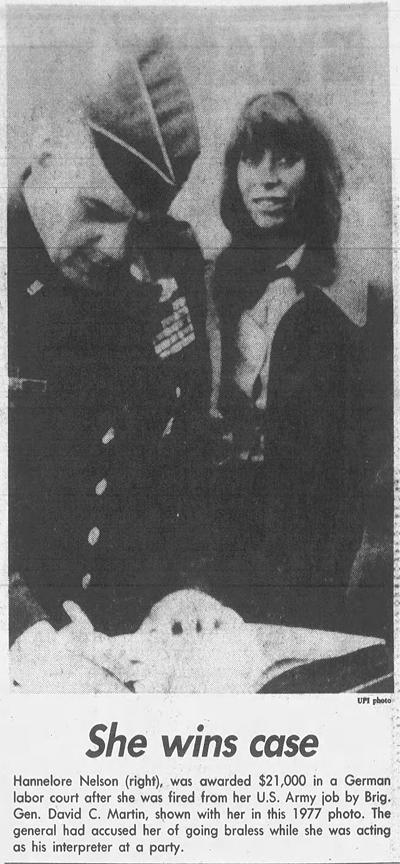
Oakland Tribune - May 31, 1978
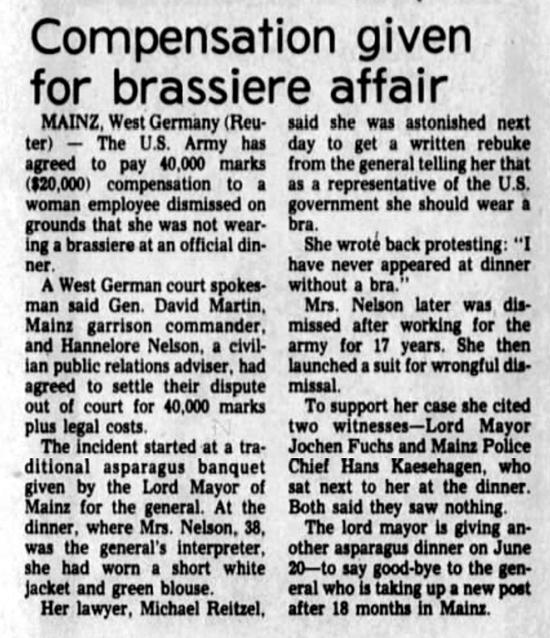
Red Deer Advocate - June 16, 1978
And in other Army brassiere news, the U.S. Army has recently developed a "tactical brassiere" which will be the first official uniform bra the Army has offered its female soldiers.
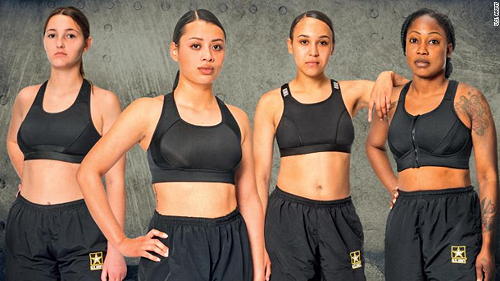
Posted By: Alex - Tue Aug 09, 2022 -
Comments (1)
Category: Military, Underwear, 1970s
The Prison Bra Rule
In 1975, Scharlette Holdman, executive director of Hawaii's ACLU, tried to visit a prisoner in an all-male Hawaiian prison, at the prisoner's request. While being searched it was discovered that she wasn't wearing a bra, and so she was denied entry. She sued, and the case went to the Hawaiian Supreme Court which ruled in favor of the prison. As a result, it remains the rule that all female visitors to Hawaiian prisons must wear bras, whether or not the lack of a bra is evident.The case: Holdman v. Olim (1978)
More info from Dressing Constitutionally by Ruthann Robson:
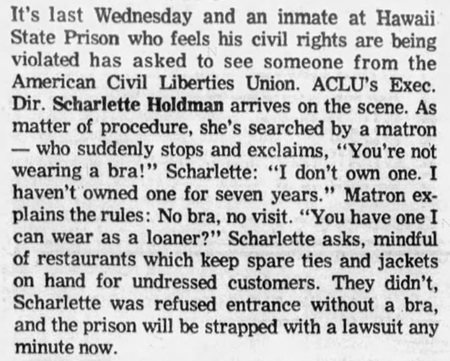
Honolulu Advertiser - Feb 3, 1975
Posted By: Alex - Sat Jun 11, 2022 -
Comments (2)
Category: Prisons, Underwear, 1970s
Follies of the Madmen #532
No mincing words here!Source.
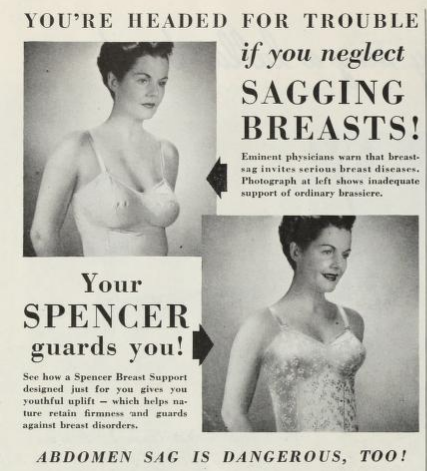
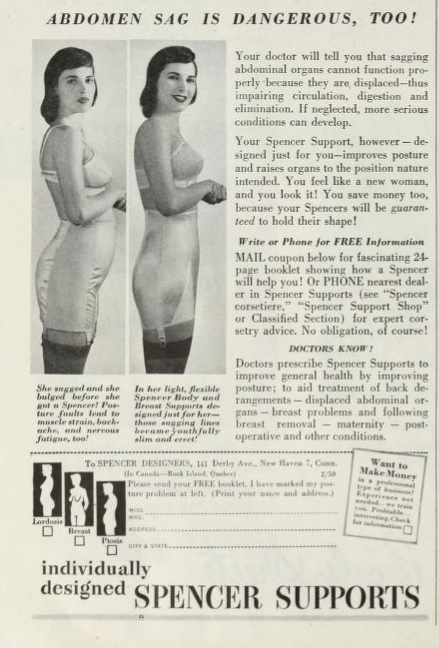
Posted By: Paul - Sat May 14, 2022 -
Comments (0)
Category: Body, Business, Advertising, Fashion, Underwear, Magazines, Rants, Warnings, Jeremiads, Prophecies and Cassandra-like Figures
Wong Tai Tung’s Metal Brassiere
In 1968, the British Patent Office granted Wong Tai Tung of Hong Kong Patent No. 1,105,147 for "Improvements in or relating to Brassiere Garments". From his patent:It is the most important point for women to have decorated brassiere garments to enhance the beauty of the bosom.
In order to meet with their requirement, I have invented a decorative metal brassiere garment. It makes the bosom appear bigger because of the twingle and sparking light of ornaments of gems and pearls on the garment.
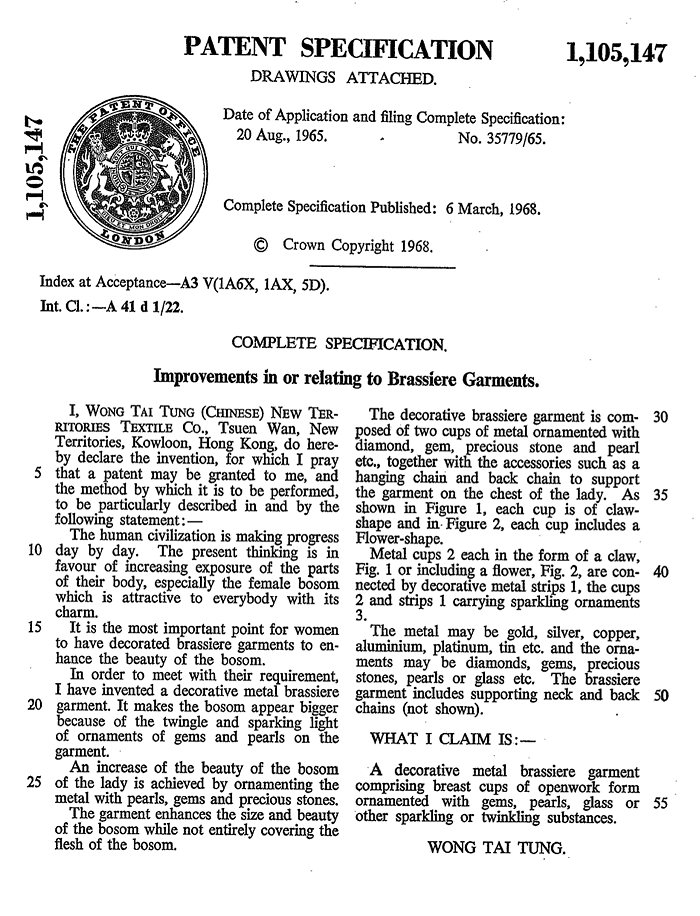
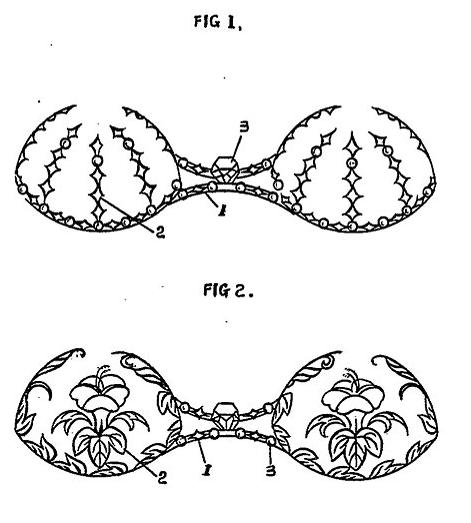
Posted By: Alex - Mon Feb 14, 2022 -
Comments (6)
Category: Fashion, Underwear, Patents, 1960s
The Damsel In Undress Campaign
A series of lingerie ads from the 1960s.Many more pics here, also from the same company's other campaigns.
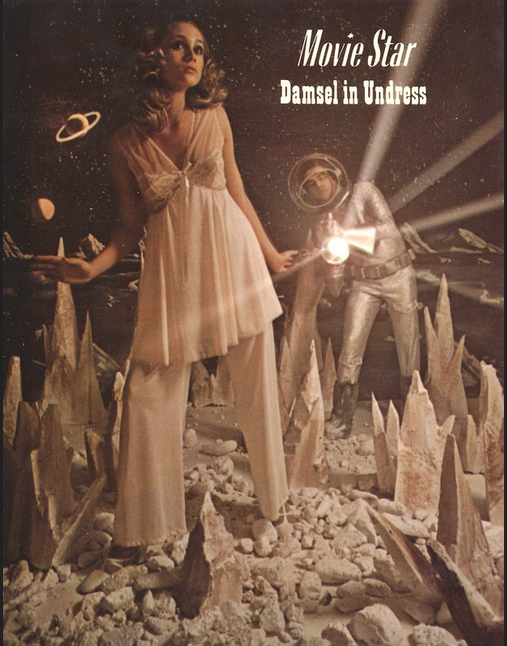
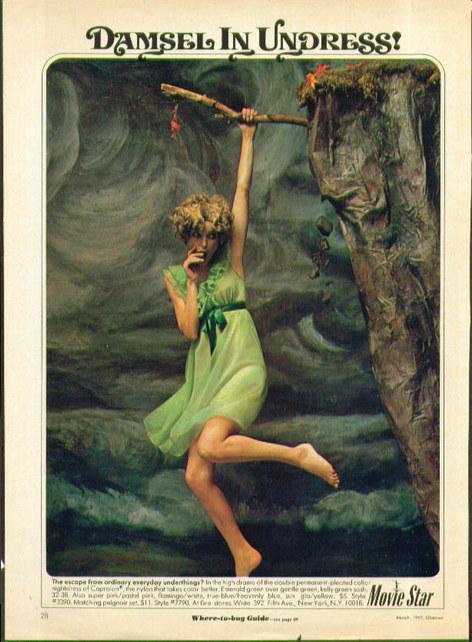
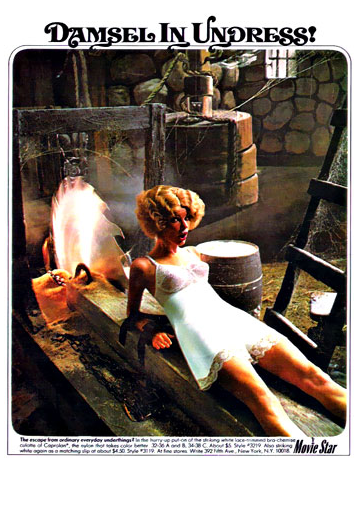
Posted By: Paul - Fri Oct 22, 2021 -
Comments (1)
Category: Movies, Advertising, Underwear, 1960s
Ralph Woltstem’s Breast Supporters
Back in the 1920s, Ralph Woltstem reimagined the brassiere. He did away with the straps around the shoulders and instead used columns to provide support from below. These columns, in turn, incorporated shock absorbers. He was granted two patents for this invention. The device in both patents looks pretty much identical to me. The images are from Patent No. 1762676, and the explanatory text below is from Patent No. 1741898: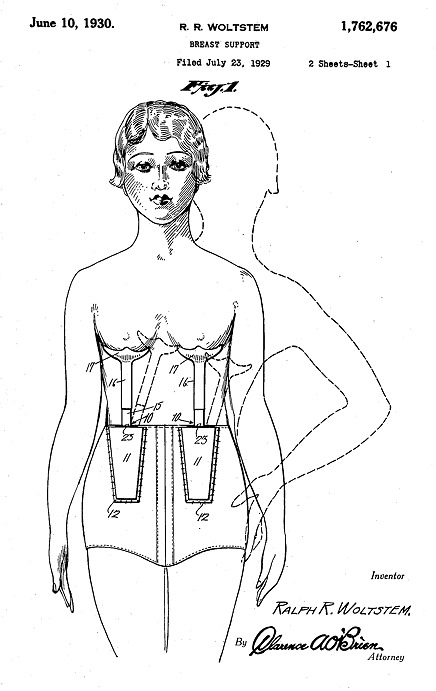
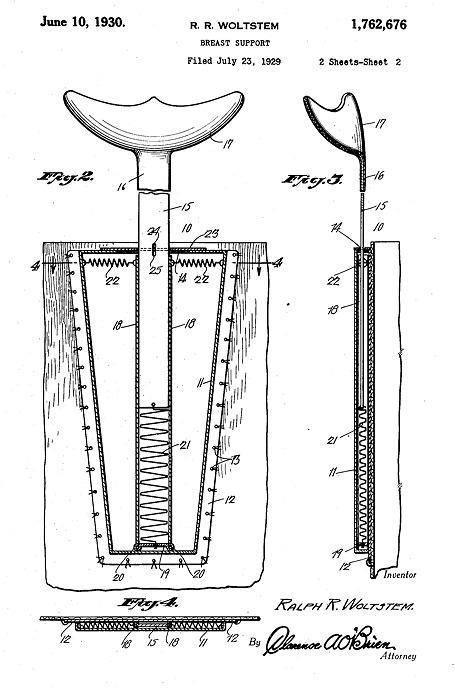
Posted By: Alex - Sun Sep 19, 2021 -
Comments (3)
Category: Patents, Underwear, 1920s
The Perma-Lift Line of Undergarments
I'm surprised no one has revived this trade name.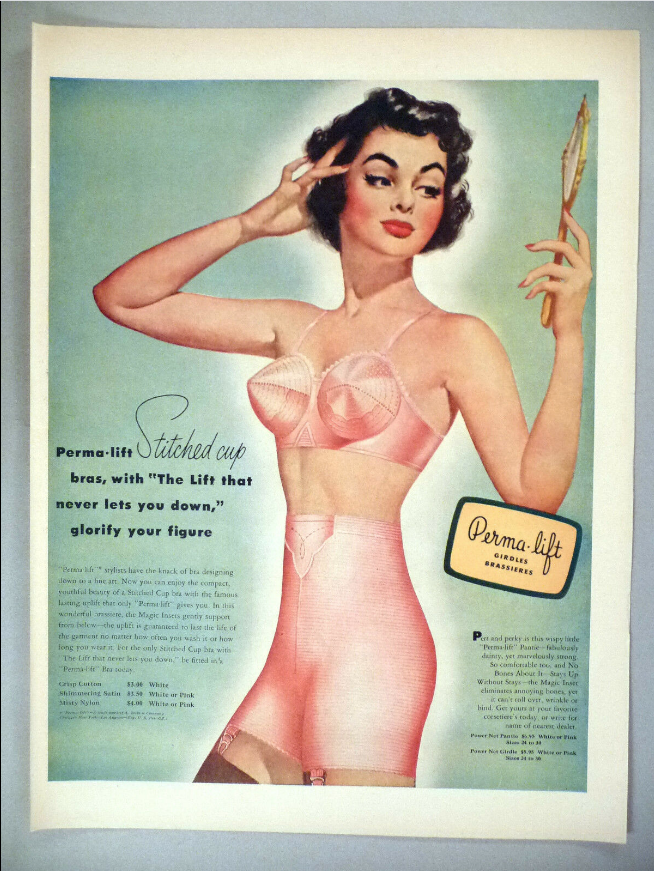
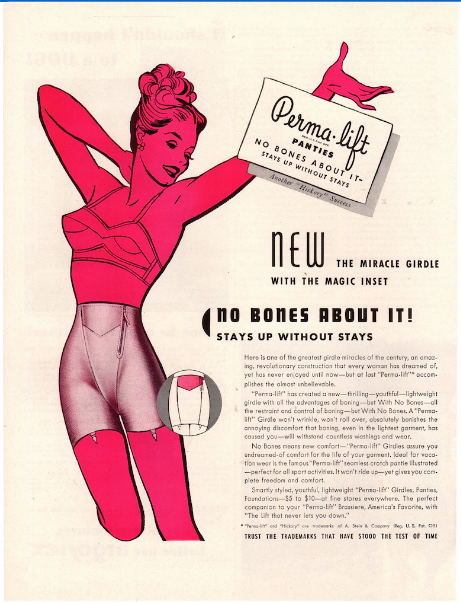
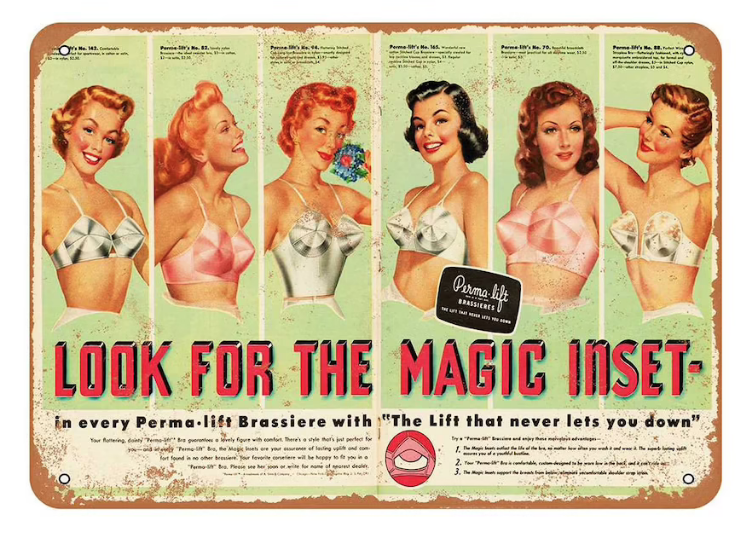
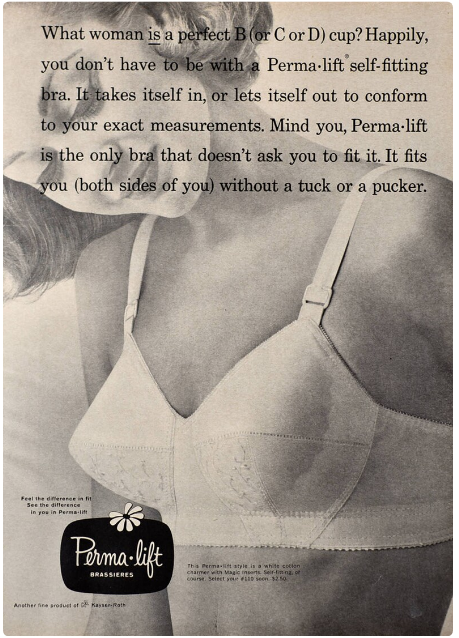
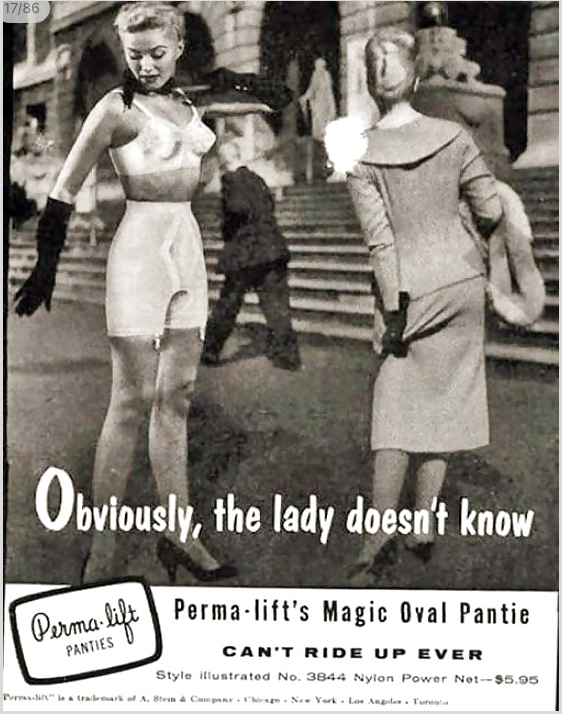
Posted By: Paul - Tue Sep 14, 2021 -
Comments (4)
Category: Advertising, Underwear, Twentieth Century
1965 Vogue Lingerie Feature
To see larger images of every page, go to link.CAUTION: NSFW pop-ups might intervene!

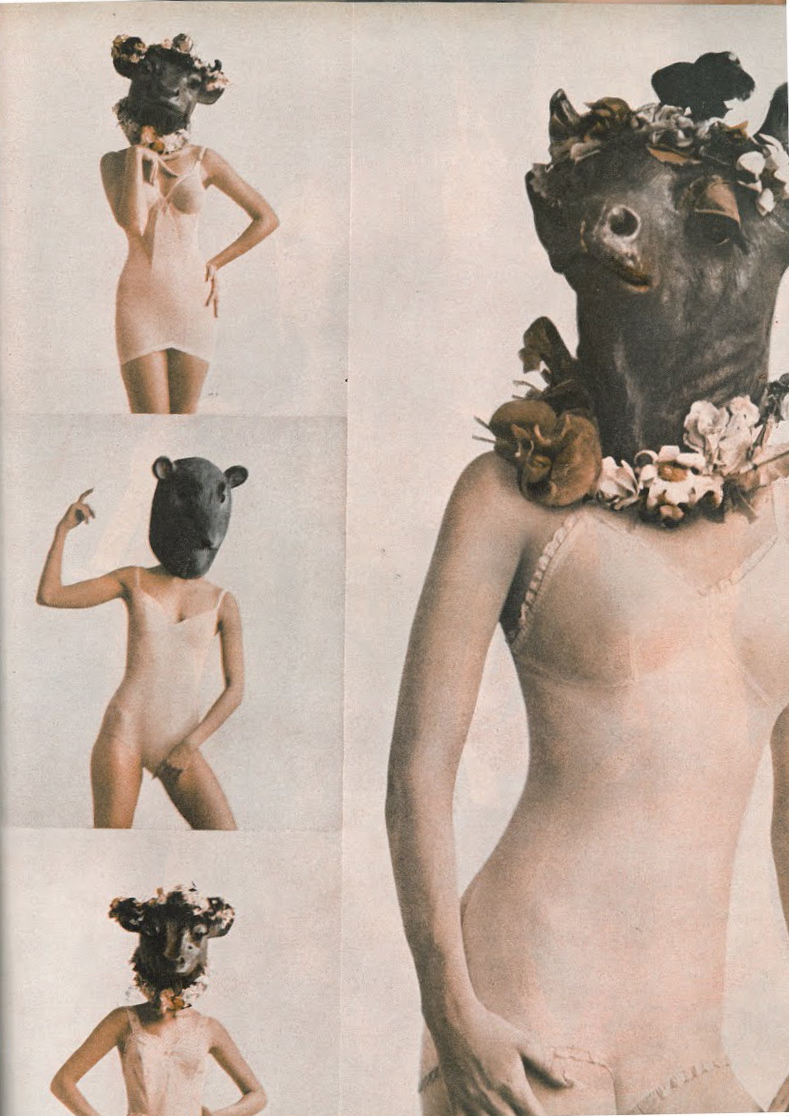
Posted By: Paul - Fri Aug 13, 2021 -
Comments (0)
Category: Animals, Anthropomorphism, Fashion, Underwear, Surrealism, 1960s

| Who We Are |
|---|
| Alex Boese Alex is the creator and curator of the Museum of Hoaxes. He's also the author of various weird, non-fiction, science-themed books such as Elephants on Acid and Psychedelic Apes. Paul Di Filippo Paul has been paid to put weird ideas into fictional form for over thirty years, in his career as a noted science fiction writer. He has recently begun blogging on many curious topics with three fellow writers at The Inferior 4+1. Contact Us |




